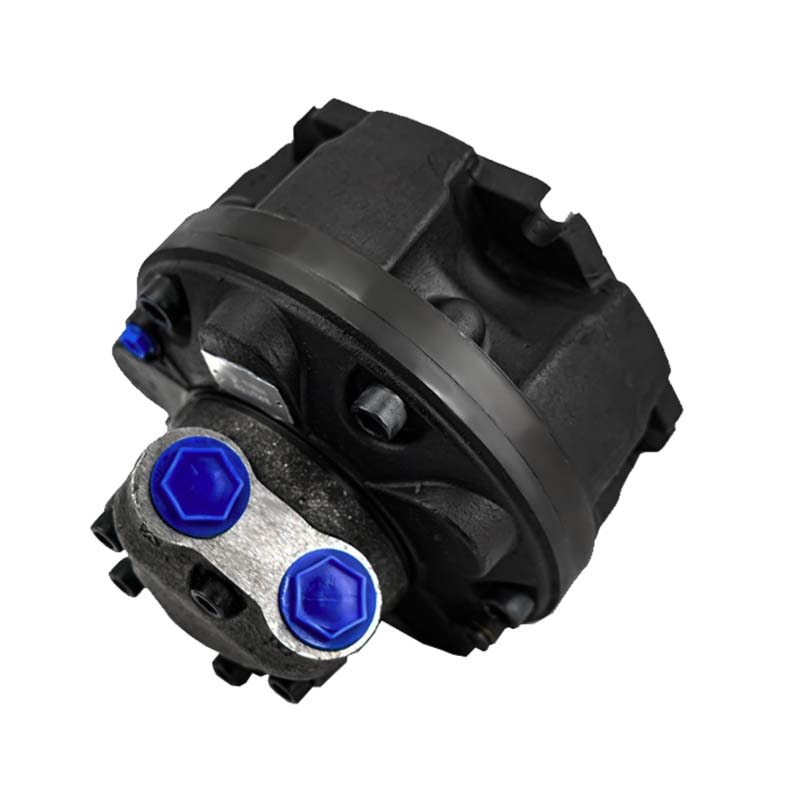Development and Application of Hydraulic Motors
The hydraulic motor, with its roots traceable back to the waterwheels of ancient China (around 100 BC), has a long and rich history. These early waterwheels were powered by flowing water and employed for tasks such as irrigation and textile production. However, significant advancements in hydraulic motor technology were slow to come until the 19th and 20th centuries, particularly with the rapid development of hydraulic transmission and control technologies, as well as hydraulic pumps. The increasing demand for rotary output mechanisms with specific performance requirements in hydraulic systems spurred the rapid development of hydraulic motors. Today, hydraulic motors have become one of the two primary output actuators in hydraulic transmission systems and find wide application in industries such as engineering, agriculture, forestry, fisheries, military, and aerospace.
While it's often thought that a hydraulic motor is simply a hydraulic pump operating in reverse, this is an oversimplified and one-sided view. In principle, Hydraulic Pumps and motors are reversible. Any type of positive displacement pump can be used as a positive displacement motor, and vice versa. However, there are significant differences in the operating requirements of pumps and motors. To optimize performance (such as efficiency, rated speed, rated torque, and low-speed stability) for different applications, specific types of hydraulic pumps and motors often have structural differences. These structural differences mainly include:
Reversibility:
Hydraulic motors require bidirectional rotation and must have symmetrical internal structures, while hydraulic pumps often operate in a single direction and can be asymmetric for efficiency. For example, Gear Pumps often use asymmetric unloading grooves, whereas gear motors require symmetric ones. The blade slots in Vane Pumps usually have an angle of inclination on the rotor, but in vane motors, they must be arranged radially. If inclined, the blades would break during reverse rotation. The distribution plates of axial piston pumps, to reduce cavitation and noise, often have asymmetric structures, but axial piston motors must have symmetric structures.
Bearing design:
Hydraulic motors must operate reliably over a wide speed range. When the motor speed is very low, dynamic bearings may not form a lubricating oil film. In such cases, rolling bearings or hydrostatic bearings should be used. Hydraulic pumps, on the other hand, often operate at a specific high speed with little variation, and this stringent requirement does not exist.
Starting torque:
To improve starting torque, hydraulic motors require low torque ripple and low internal friction. Therefore, the number of teeth in a gear motor cannot be as small as in a gear pump, and the pre-tightening force during axial clearance compensation is also much smaller than that of a pump to reduce frictional resistance and increase starting torque.
Self-priming capability:
Hydraulic motors do not require self-priming capability, but pumps must ensure this basic function. Therefore, point-contact axial piston hydraulic motors cannot be used as pumps.
Blade sealing:
Vane pumps rely on the centrifugal force generated by the rotating rotor to force the vanes against the stator, forming a sealed working chamber. When used as a hydraulic motor, there is no force to press the vanes against the stator at startup, preventing the sealing of the working chamber and preventing the motor from starting. Therefore, vane motors must have leaf-shaped swing springs or helical springs and other blade-pressing mechanisms, which are not found in vane pumps.
Saivs brand
- Counterbalance Valves CBGG
- Cavity 08-2 08-3 08-4
- Rexroth proportional reducing valve 3DREP6 Series
- rexroth 4wrke16 4wrke25 series electro-hydraulic proportional directional valve
- Smaller Pressure Fluctuation Denison Vane Parker Pump T6C For Sale
- A10VSO/31 Rexroth Hydraulic pump
- GM6 Series Low Speed Radial Piston Hydraulic Motor
- AZPJ series Rexroth Gear Pumps
- eaton vickers pvq series straight axle variable displacement pump
- sai gm4 hydraulic motor radial hydraulic motor and hydraulic hoist motor oil pump
